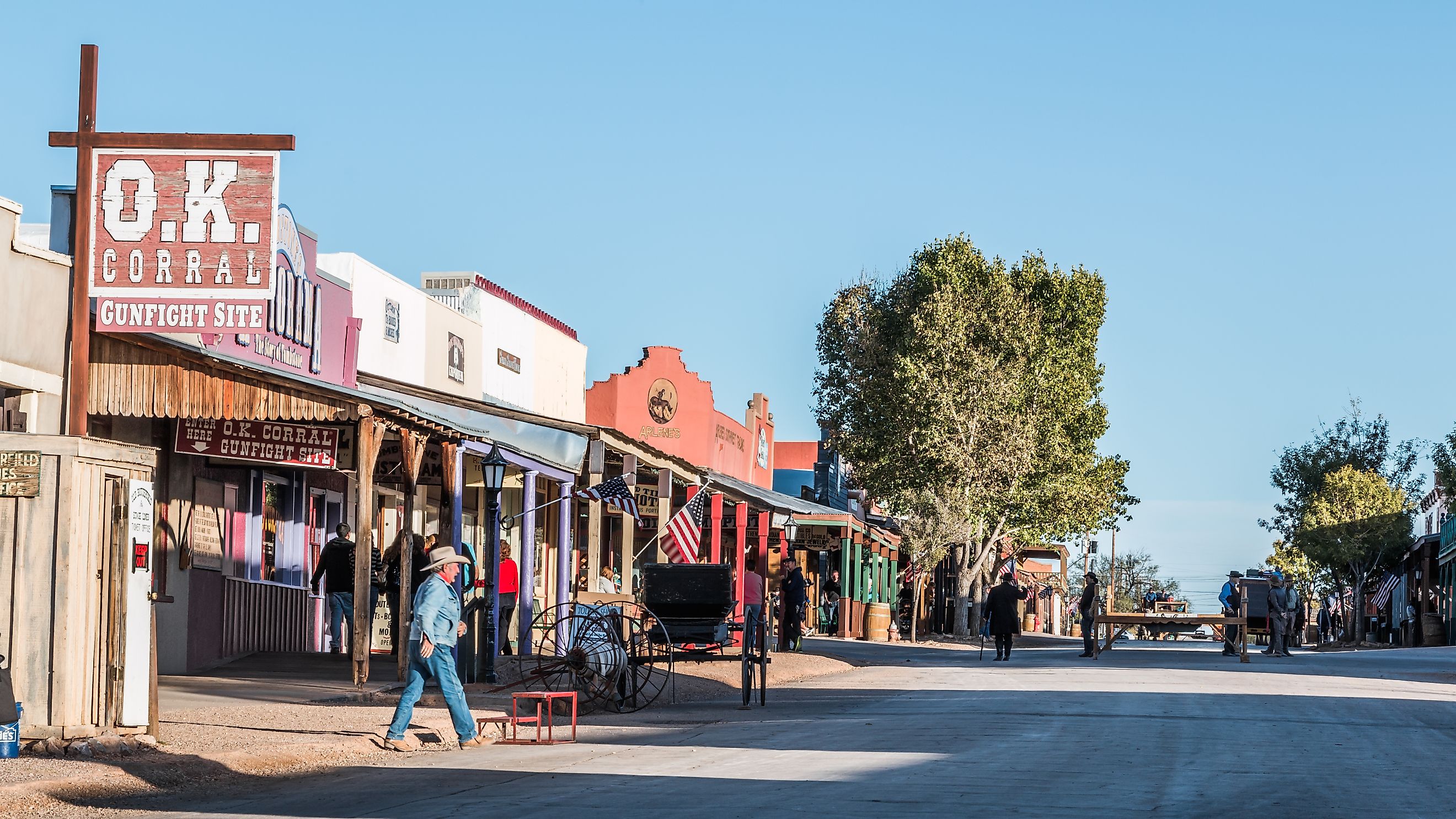
7 Must-See Historic Towns in Arizona
The origin of Arizona’s name is highly contested—does it come from the Aztec word “arizuma” meaning “silver-bearing”? Or the Spanish word “zona arida” for “arid zone”? Or the Basque word for “good oak tree”? Whatever the ambiguity, it is quite clear that the small towns of Arizona do have qualities that make them silver-bearing, arid, and having one or more good oak trees. There are a number of must-see historic towns in Arizona that have contributed to the state’s Old Western atmosphere and popularity. Outside of Phoenix and other major cities, in the dynamic chaos of the Grand Canyon and beyond, history comes alive in the tumbleweed-roaming towns that have barely changed since the Wild West era.
Tombstone
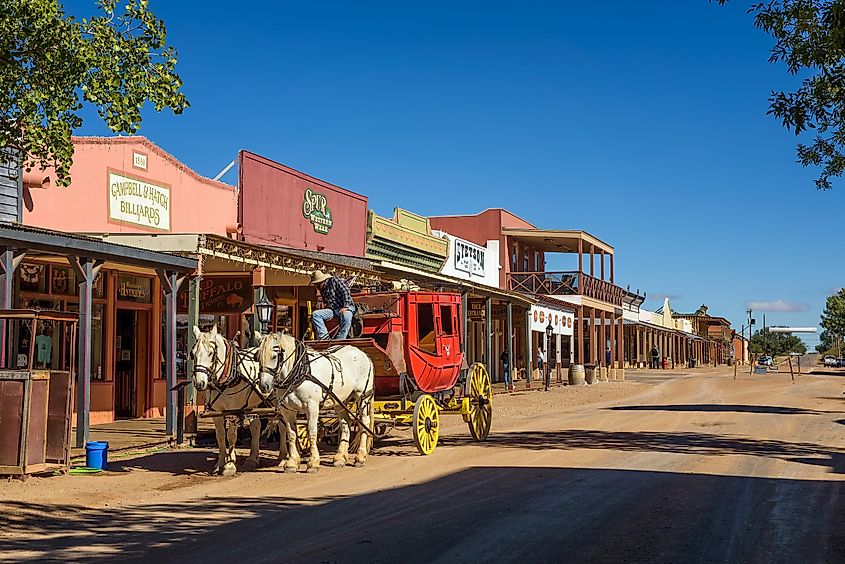
Contrary to the morbidly ominous and eerie name, the town of Tombstone is called the Town Too Hard to Die. About 74 miles from Tucson, one can relive the diehard life of the Wild West. The cowboy boots of Wyatt Earp, John H. “Doc” Holliday, Johnny Ringo, and many other famous outlaws once roamed the dusty streets of Tombstone during the silver rush. You can witness a reenactment of a gun battle between Earp and Doc Holliday from 1881 at the infamous O.K. Corral, or gawk at a replica gallows at the Tombstone Courthouse State Historic Park. The bullet-riddled Bird Cage Theatre is said to be haunted by the town’s many ghosts. Fittingly, Tombstone is more famous for the tombstones at Boothill Cemetery that mark the resting places of history’s most adventurous outlaws. If you want to experience more of the diehard life, then settle in the cowboy ambiance of Tombstone Grand Hotel or Tombstone Miners Cabins.
Jerome
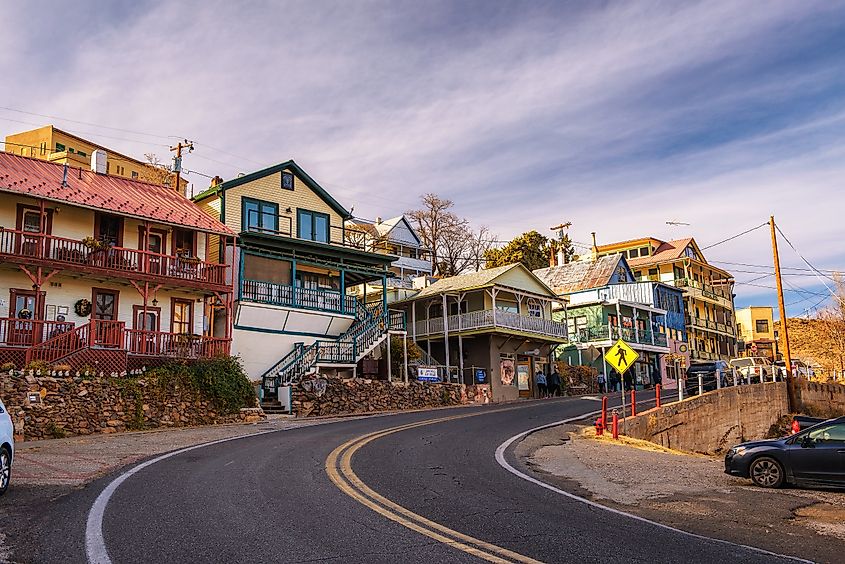
Explore Jerome, the “Wickedest Town in the West,” situated at the top of Cleopatra Hill halfway between Flagstaff and Prescott. Jerome earned its moniker as the copper mining operations attracted swarms of bootleggers, miners, gamblers, and prostitutes. The town was also widely considered the largest copper mining town in Arizona, and visitors can take a tentative step on the glass viewing platform at Audrey Headframe Park to peer down at a 1918 mine shaft. Or you can take the Queen Mine Tour for a deeper exploration of the past. Consider heading to the Jerome State Historic Park, where you can learn more about Jerome’s background at the Douglas Mansion. Although the many unsavory types have left Jerome, people are still attracted to the place due to the many art studios, historic galleries, and wineries that dot the Verde Valley. As a ghost town, visitors ought to spend the night peacefully at the Connor Hotel, The Clinkscale, or Ghost City Inn.
Prescott

Surrounded by the tower-high ponderosa pines of central Arizona, Prescott beckons travelers with all sorts of historic charms. One can take the Prescott Heritage Trail and History Hunt Adventure for an immersive experience throughout the town. The Sharlot Hall Museum, for example, entreats visitors with exhibits and artifacts portraying the pioneering heritage of the town. Meanwhile, the Museum of Indigenous People is dedicated to the preservation of the Native American peoples in Arizona. Old-fashioned saloons, bars, and live music venues flank the well-preserved thoroughfare of Whiskey Row. On the 4th of July, aside from Independence Day, you can enjoy Prescott’s annual cowboy tournament, the World’s Oldest Rodeo. For places to stay, look to Prescott Pines Inn or Hotel Vendome as two of many lodgings to lounge at.
Bisbee
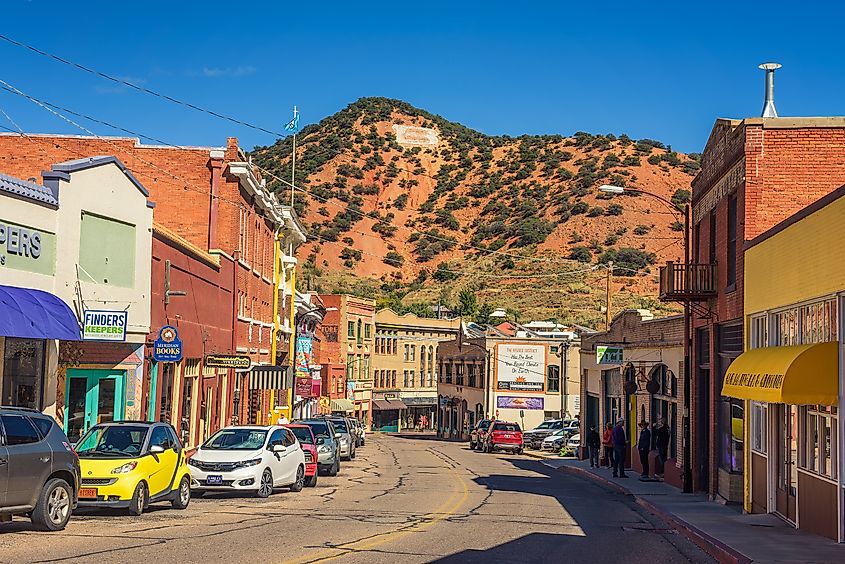
Camped out in the Mule Mountains near the US-Mexico border, and 25 minutes from Tombstone, the sequestered town of Bisbee was one of the wealthiest mining towns in Arizona. Both the Bisbee Mining & Historical Museum and the Bisbee Restoration Museum illustrate Bisbee’s copper-mining heritage, and, similar to Jerome, visitors can take a Queen Mine tour through the underground areas that gave the town the name “Queen of the Copper Camps.” Marvel at the man-made mining grounds at the Lavender Pit Mining Overlook. On March 9, the town welcomes the annual migratory return of the turkey vultures. As for accommodations, the Shady Dell and Bisbee Grand Hotel are well-preserved Victorian structures that will service your daily necessities.
Oatman
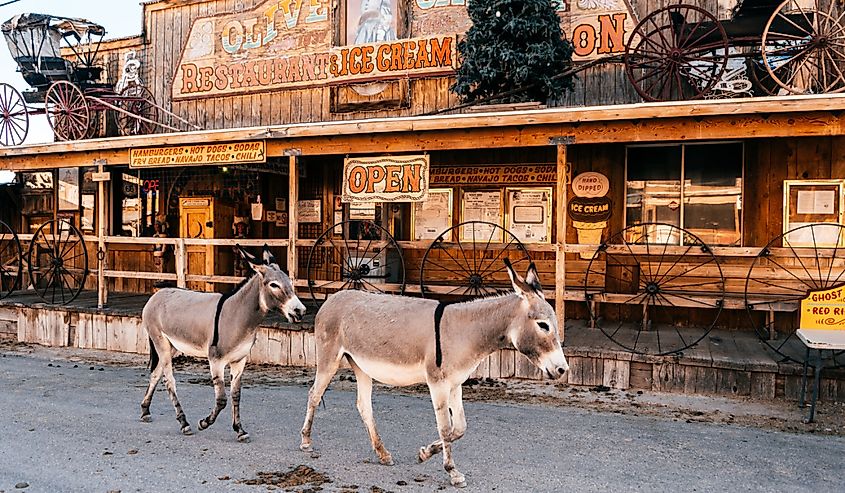
Most ghost towns in Arizona are surprisingly alive with bustling tourists and lively tours of history. But in the solemn deserts of Arizona, the almost deserted town of Oatman embodies the quietude and lackadaisical character of a true ghost town. In its heyday of the early foundational 1900s, after the Apache and Mojave Native Americans left the territory, Oatman was one of the largest producers of gold in the state (over 10 million US dollars’ worth) due to its location in the Black Mountains. But the depletion of rich minerals soon left the town in disarray. Now people travel the historic Route 66 to this semi-abandoned town for the rustic architecture and the iconic burros—descendants of the early miners’ donkeys. Indeed, you will find more burros than actual human inhabitants in Oatman.
Sedona

Although Sedona is home to the amber-colored Grand Canyon, many Native Americans have viewed the land as sacred. The Verde Valley Archaeology Center in Camp Verde includes exhibits of the Hisatsinom, meaning "Ancient People“ in Hopi, a mural wall depicting the origins and travels of Hopi ancestors in the Sedona and Verde Valley since 2,000 B.C. The Montezuma Castle and Well National Monuments and Tuzigoot National Monument offer more detailed narratives and contexts about the ancient peoples that called the Grand Canyon their home. So learn to appreciate the majestic heritage of a town that is only about 67 miles from Prescott, and recharge from your adventures at the Sedona Reál Inn and Suites, A Sunset Chateau, or Sky Rock Sedona.
Holbrook

Holbrook combines humanity’s ancestral artworks with nature’s timeless artistry in the Painted Desert. The Navajo Nation made their dwellings in the awesome Chinle Formations, natural structures that date far back to some 200 million years. Specifically in the Petrified Forest National Park, visitors can ogle over the transcendental remains of petroglyphs, a hundred-room Pueblo compound, and the Agate House, an eight-room Pueblo structure at Puerco Pueblo. Additionally, you can explore the Canyon de Chelly, Homolovi Ruins, and Window Rock for a better appreciation of history and art. You can also treat yourself to the Bucket of Blood Saloon and the Blevins House, where Sheriff Commodore Perry Owens and the Blevins gang battled in a ferocious shootout. Do consider staying a while at Wigwam or Brad’s Desert Inn.
In Conclusion
Arizona is a fiercely rugged land that has barely changed since cowboys and Native Americans galloped from town to town. Ghost towns like Tombstone and Oatman embody the transcendental spirit of the American Wild West, while mining centers like Jerome and Bisbee exhibit Arizona’s natural richness that allowed many figures in American to prosper. As for ferociously beautiful places like Sedona, Holbrook, and Prescott, there is no shortage of wonders one can find when remembering the past and experiencing the present. So polish your boots and kick up the dirt as you roll like a tumbleweed towards these must-see historic towns of Arizona.











